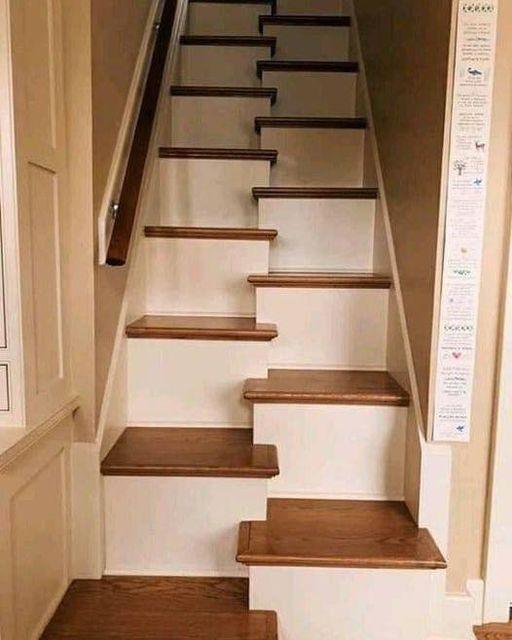What Are Witches’ Stairs?
“Witches’ stairs,” also known as “alternate tread stairs,” are a unique staircase design that optimizes limited space while adding a touch of mystery to any setting. These stairs consist of alternating treads that reduce the floor area needed, making them an ideal solution for homes with tight spaces, lofts, or attics. Despite the eerie name, they serve a highly functional purpose.
The Mechanics Behind Witches’ Stairs
Witches’ stairs differ significantly from standard staircases. Each tread is half as wide and staggered, fitting narrow spaces while providing ample support for users. This structure allows homeowners to use spaces more efficiently, and they often double as clever storage areas.
 Scott Schuttner, author of Basic Stairbuilding, describes alternate tread stairs as providing more tread space, making them safe despite their unusual design. While standard stairs are about three feet wide, witches’ stairs typically measure 27 to 30 inches, meeting building codes while occupying minimal floor space.
Scott Schuttner, author of Basic Stairbuilding, describes alternate tread stairs as providing more tread space, making them safe despite their unusual design. While standard stairs are about three feet wide, witches’ stairs typically measure 27 to 30 inches, meeting building codes while occupying minimal floor space.
The Origins of Witches’ Stairs
Though the modern alternate tread staircase is relatively recent, patented in 1985 by J.M. Lapeyre, similar designs date back to at least the late 19th century. Lapeyre’s patent aimed to replace ladders in industrial environments, providing safer options for tight spaces like warehouses and oil rigs. Historically, staggered steps have been seen as practical solutions to maximize space.
An 1888 publication, Monckton’s One Plane Method of Hand Railing and Stair Building, documents early versions of alternating tread stairs, indicating that these stairs have served practical needs for centuries.

Unraveling Myths and Misconceptions
Despite their mysterious allure, witches’ stairs have no direct connection to witchcraft. TikTok videos in 2021 fueled myths linking the stairs to the Salem witch trials, claiming that people in Massachusetts constructed them to deter witches, who supposedly couldn’t ascend uneven steps. This tale, however, has no historical basis. In reality, witches’ stairs were never designed with folklore in mind.
There’s also a common rumor that Thomas Jefferson invented these stairs, sometimes earning them the nickname “Jefferson stairs.” However, no credible evidence supports this claim.
Historian Robin Briggs, a witchcraft expert, confirms that folklore lacks any mention of staircases designed to ward off witches. While witch bottles and charms were sometimes used in homes, there’s no known superstition tying these measures to stair design. The practical use of witches’ stairs makes it clear that their origins are rooted in architectural efficiency rather than superstition.
The Modern Appeal of Witches’ Stairs
Today, witches’ stairs remain popular among homeowners looking to maximize space while introducing a creative element into their interiors.
